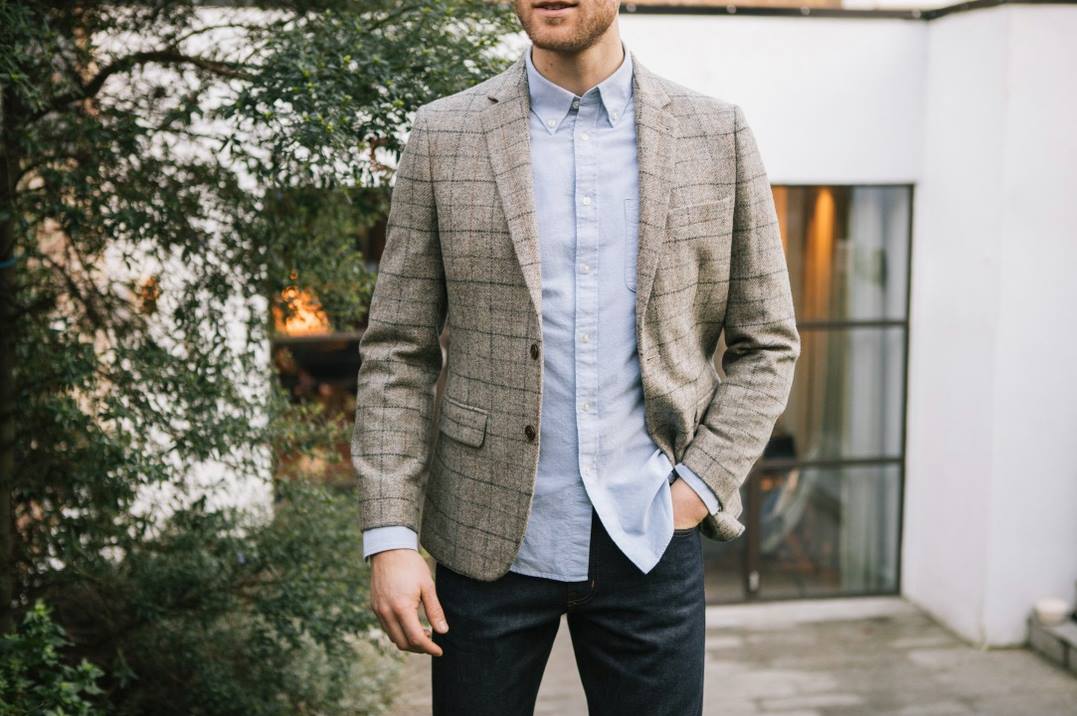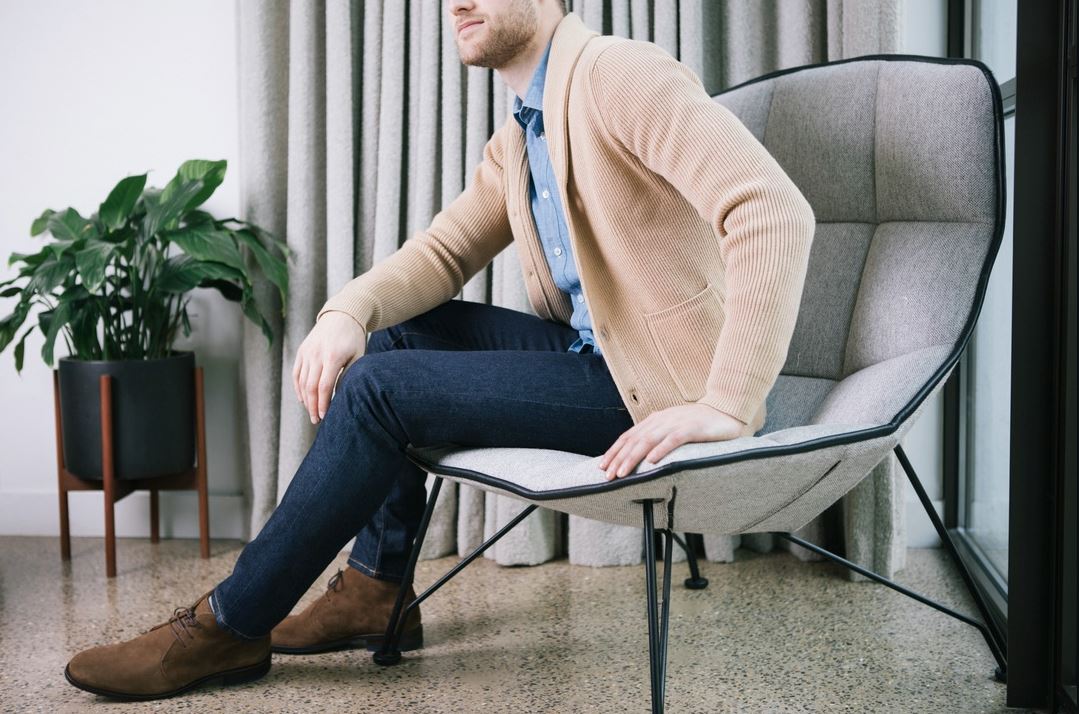1
HOME > Tips & Advice >
WHAT DOES IT MEAN TO “DRESS FOR THE JOB YOU WANT”?
Written by Ivan Yaskey in Tips & Advice on the 2nd March 2023

No matter your age or gender, job advice tends to be contradictory. Control your social media presence – but consider a TikTok resume to grab attention. Cover up those greys and camouflage wrinkles – but own your experience in proving your value to your employer. Or, be grateful for just any job – but ask higher-ups for mentorship and career tips. Somewhere in here is dressing for the job you want. The phrase is past the cliché point and, in an era of hybrid work environments, starts to feel dated. Wording acknowledges, or at least alludes to, decades of showing up to work in a suit, but honestly, excluding job interviews, most of us can’t remember the last time we dressed in such a fashion. Now, from startups through the major finance players, smart casual is the expectation.
Similarly, the phrase harks back to a time of stark dichotomies in dress codes: Think blue collar environments versus the secretary pool versus the office set. Now, though, definitions, at least in terms of appearances, are blurred: We’re all, in some variation, wearing jeans, a button-front or T-shirt, and a quarter zip. Meanwhile, warehouse unionizers to tech bros manage to finagle some streetwear in. With these trends, power dressing – and subsequently the suit – seems to have met its end – or at least is going through a period of cultural and stylistic obsolescence. Yet, the notion of dressing to get ahead hasn’t faded out: Despite clinging to equally dated respectability politics, this assumption has mutated with all the grey areas involved in dressing for work. Here’s what to consider:

What “Dress for the Job You Want” Means
This isn’t so easy to define in a world of flat workplace hierarchies. Maybe you don’t have a direct manager, or your company insists on collaborations and faux-transparency, rather than red tape-heavy bureaucracy. Or, you’re in a small-business situation, where everyone wears multiple hats. In any case, the phrase ultimately means dressing for your aspirations. Are you an editorial assistant or copyeditor seeing yourself as a magazine’s managing editor? Look at who’s shaping the editorial direction and begin to emulate them – of course, within your budget. You might feel silly – overdressed, trying too hard, or seeming like a visual suck-up. Anyway, the approach ends up having a two-fold benefit: Your superiors start to see that you’re like them – again, class and race politics can come into play here – and may perceive you as an authority. This can pave the way toward mentorship and, if you’re in a client-facing role, closing more accounts that support your performance and help you move up to the next level. This isn’t just some dated Dale Carnegie-level advice, however. Research notes a correlation between this effort and outcome: A 2014 study found that individuals emulating or embodying a higher social status – essentially, dress along with behaviour, hobbies, and relationships – is associated with stronger job performance in more demanding work environments, including more effective negotiations and better client relationships. While the perception of authority definitely frames this correlation, another study found that formal dressing appears to enhance abstract-thinking and decision-making skills.

Approaching “Dress for the Job You Want” in 2023
Men’s dress codes aren’t what they used to be. While women have contended with multiple variables for decades, men generally have had the privilege of being perceived as an authority in a suit, dress shoes, and combed hair. The present, though, is characterized by nuance and what your appearance projects:
Getting the Hint
As already mentioned, what styles and types of clothing – although not necessarily brands – do those a rank or two above you wear? In this instance, get inspiration, avoid direct emulation, and refrain from trying too hard. That is to say, if these co-workers are the type to sport chinos and the occasional sport coat, don’t overdo it by routinely showing up in a two-piece suit with peak lapels. At the same time, realize that you don’t want to appear as if you think you’re better than your work peers. As such, make sure your attire still reflects your status or department while intertwining your aspirations.
Build Your Brand
Your skills are just one part of your professional identity. The rest involves how you apply them, your personality, your aspirations, and how you connect with others. Your attire, while still not definitive, serves as a framework here: Think the ultra-casual geniuses of Silicon Valley or the put-together lawyer aspiring to partner. In this instance, you’re advised to see your attire through a two-part lens. One, focus on your reputation: While it shouldn’t need to be said, make sure whatever you wear is ironed to be free of wrinkles, free of stains, and coordinated. Two, consider the impression your clothing gives off: Most of us aren’t savants with the privilege of dressing slovenly, so make sure what you select falls within smart-casual lines. Added to this last point, keep your clothing and grooming consistent: This factor ultimately builds your visual brand.

Transitioning to a New Job
A few pieces of advice circulate around in this regard. One, don’t be afraid to ask human resources about the company’s dress code. Two, base your attire around your interview: Perhaps slightly more casual but still on the conservative and traditional side for your first few weeks on the job. Limit, or avoid, loud colours, patterns, and jewellery, and keep your hair and facial hair groomed. Over this time, take note of what your direct peers and superiors are wearing, and begin to base what you select around this foundation while incorporating a touch of personality.
Planning Long Term
Suit separates aren’t a gimmick: Instead, they’re a mix, patch, and pairing solution that adapts to a range of environments. Even as you adjust to a new workplace, avoid feeling as if you have to go out to buy an entirely new uniform. Rather, here’s where adaptable and more modular clothing comes in: Today, through a capsule approach, work wardrobes integrate with your after-work and weekend casual basics. This keeps costs down, eliminates having to own distinct and separate wardrobes, and helps keep your closet more manageable.
Cultural Fit
The phrase “cultural fit” is the bane of modern work environments – vagueness used to justify exclusion, oftentimes based on race, gender, sexuality, and class, and a quick, seemingly compliant excuse for letting someone go. Multiple components go into cultural fit – and also, let’s face it, you can cross off the full checklist and still be told you don’t fit in.

On the other hand, research, predictably, shows that managers go off affinity biases: Or, connecting with and promoting others similar to them. Apparel can assist with this, showing you’re serious about your job, appealing to those one or two levels up, and helping establish your brand and authority. Added to this, reflecting others gives off the vibe that you’re socially aware, reading the room, and a team player. Yet, mimicry can also relegate you to the background. Research has also identified what’s known as the “red sneaker effect”: Or intentionally not conforming. While not advised early in your career, this approach boosts the individuality, brand, and recognition of those with a recognizable degree of authority or social status.

Trending
2
3
4
5
6
7
8
9
10









